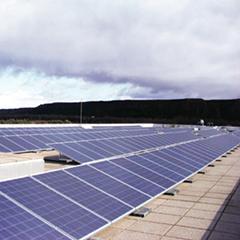Autarky: the quality of being self-sufficient. We’re proud to present a thought-provoking dispatch on the subject and how it’s rooted in the solar market from one of the industry’s most respected commentators…
Since the 60s, people have been putting panels on their roofs with complete disregard for Feed-in Tariffs. These green pioneers were interested in producing energy naturally, but as concern over climate change became increasingly widespread, governments around the world intervened to encourage uptake, culminating in the recent booms in Germany, Spain, Italy, Czech Republic and the UK.
Thousands of speculators entered the market, and then came the Feed-in Tariff cuts, since when many have moved on to other technologies. Yet the industry has not disappeared as was predicted by the media. In the UK, 500MW were installed in the first quarter of 2013, more than half total installations in 2012. This is by no means a market in decline.
The main spur to growth is increasing awareness that, just as with food, knowing where your energy comes from and how best to use it can be very good for you. This shift in thinking is spreading out across the EU – from factory owners to student renters.
This is the drive towards “Autarky” – a word originating from ancient Greek, meaning ‘economic independence’ or ‘self-sufficiency’ – which likewise motivated those first green pioneers to put panels on their roofs. Many installations are still operating today, decades later.
‘Autarky’ is typically used for countries when they close off their economies to the outside world. In the years following independence from Britain, the United States and India both pursued policies of autarky, seeking to build up their domestic infrastructure. Such an approach is today considered economic suicide, primarily because there are inevitable downsides to disengaging from world trade. But perhaps there are lessons to be learned from the American and Indian experience.
Like the former British colonies, energy users today find little direct upside in their relationship with their benefactors. Electricity flows only one way from the grid to the home, and money only flows in the other.
Across Europe, this is placing an increasing burden on citizens, public sector organisations and businesses. Over the last 10 years in Germany, electricity prices for end-customers have risen by an average of 4 per cent a year, and experts forecast considerable further increases for the next few years.
In the UK, which has traditionally had low energy prices, declining coal use and new commitments to gas, nuclear and offshore wind saw residential electricity prices increase 79 per cent from 2004 to 2011. Gas prices have meanwhile more than doubled.
There can be no greater driver of uptake for solar – a proven, efficient technology requiring minimal maintenance – than rapidly increasing energy bills. Businesses, public sector organisations and ordinary households are so used to affordable electricity that a simple means of producing their own makes instant sense.
Selling the idea might appear difficult because in the residential market for example, hundreds of Euros in cost savings appear small beer compared with thousands in upfront costs. Those cost savings are annual though, while the installation price is a one-off. The rapid decline in PV costs means that relative return in terms of cost savings has increased significantly. No wonder, survey after survey shows that consumers are more alert to the attractions of cost savings, than to the old focus on Feed-in Tariff yields.
This is where autarky comes in. At Conergy, we define autarky as the proportion of electricity a property consumes, that can be produced independent of the grid, through microgeneration. Many technologies can contribute here, but solar is proving the winner, the most intuitive of the breed, and the most popular both in the UK, and across Europe.
The key is for buyers and sellers of solar to understand that a solar installation is not a mini-power station for the grid. Solar energy can produce a substantial portion of the energy required by any property. What is important is to ensure that as much of the energy produced is also consumed on-site.
The greater the difference between the export Feed-in Tariff and electricity prices, the better incentivized the property owner is. Exporting to the grid in the UK for example yields 60 per cent less than energy consumed by the property owner. Since the trend is for energy prices to rise, and Feed-in Tariffs to fall, this equation is where growth lies in the solar business.



























